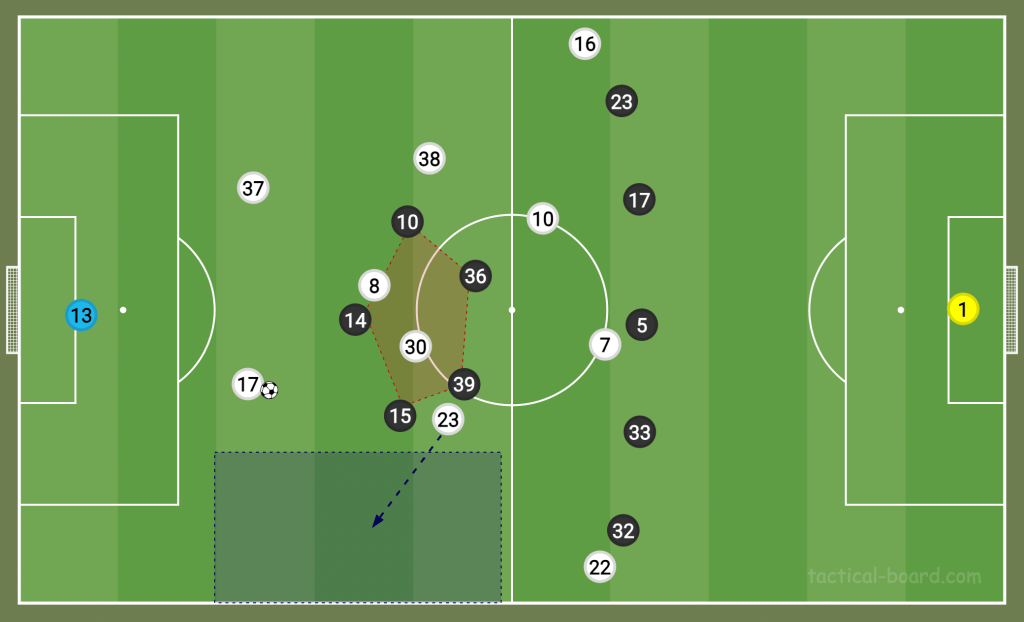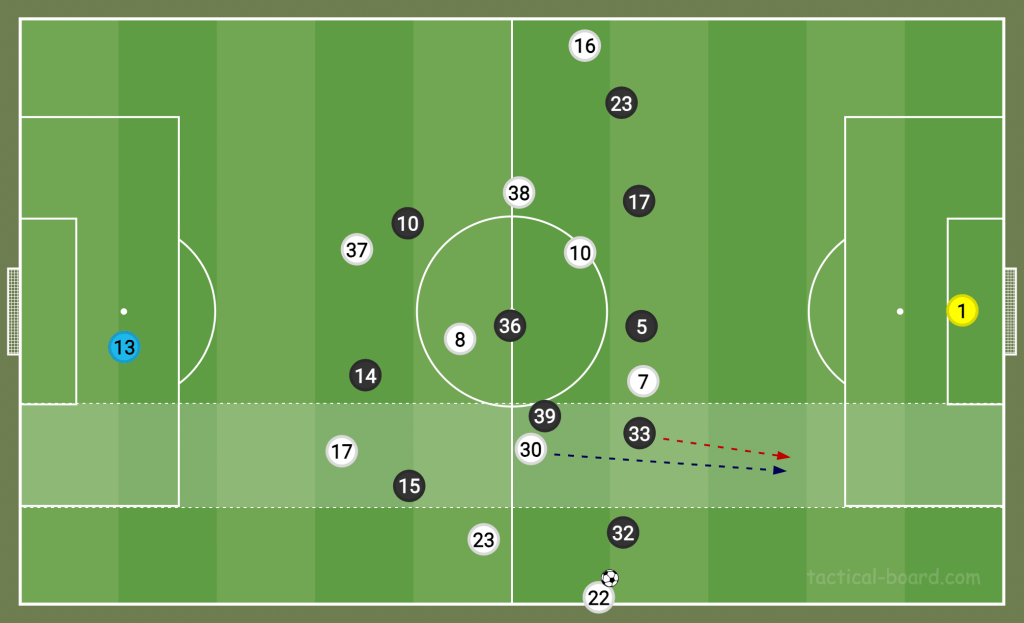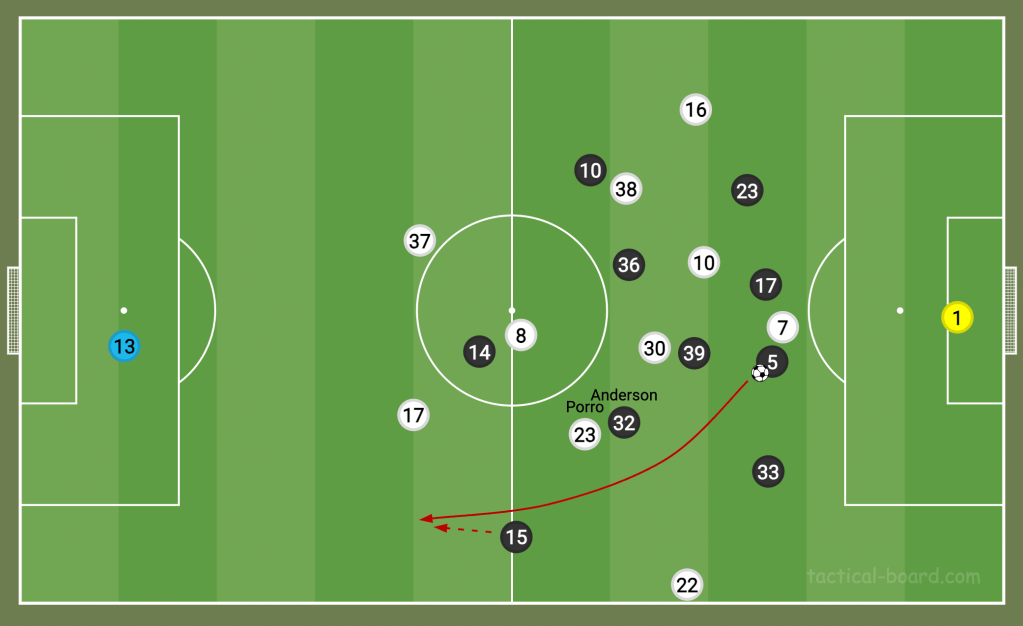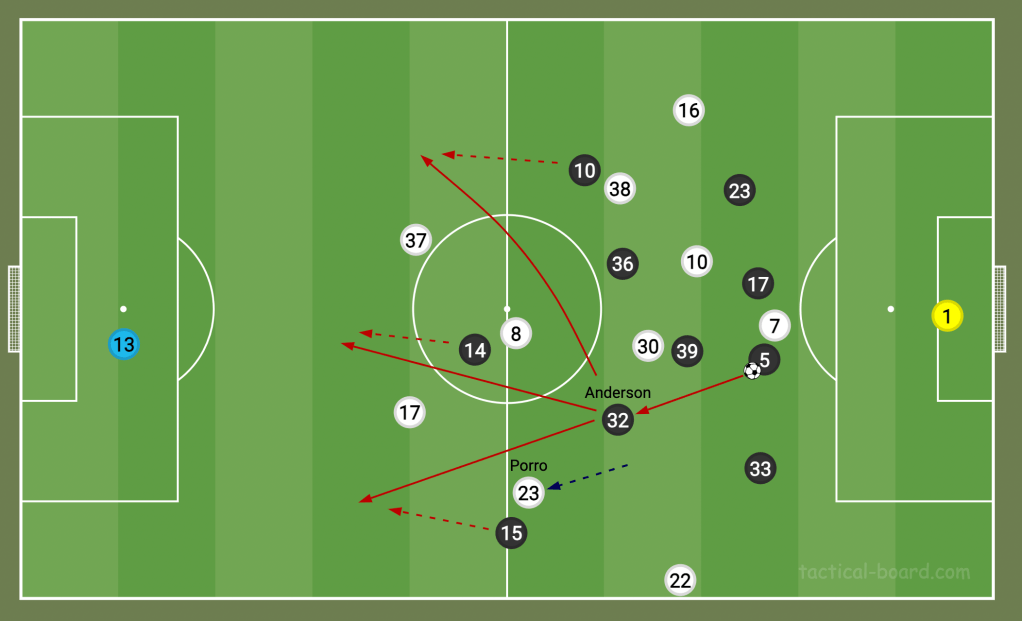Tottenham, this year, are a team defined by their narrow, underlapping full-backs. They build up in central areas with (essentially) five midfielders, then spread the ball wide to exploit width. They have, however, struggled against sides who use a back five. Why? They can’t make their underlapping runs. Newcastle used a back five at times… but with a central midfielder at left-wing-back.
Newcastle’s press involved their front five staying narrow and preventing central progression for Spurs. They wanted to leave space out wide because they wanted to force Spurs to play wide early on. That’s exactly what happened.

Well, Spurs remained stubborn in the first half, trying to persist with their gameplan, but kept losing the ball in dangerous positions. Newcastle scored twice from nicking the ball during Spurs’ build-up. After half-time, Spurs changed tack.
With Spurs’ full-backs drifting uncharacteristically wide to receive passes, they lost their chance to play in central areas. And even when they got the ball to the wingers, Newcastle’s centre-backs could track underlapping runs.

Usually, against a back four, a Spurs midfielder or full-back can run in behind the defence, tracked by the run of an opposition midfielder, who leaves a gap in the middle of the pitch for Spurs to exploit. However, thanks to their back five, Newcastle’s midfielders could stay put, with Dan Burn and Emil Krafth dealing with underlapping runs.
Why did Newcastle not play with traditional wing-backs?
It was Elliot Anderson who dropped from central midfield to left-wing-back out of possession. The main reason was that Newcastle wanted to maintain their traditional 4-3-3 shape in possession. So Anderson would return to central midfield when Newcastle regained the ball.

What was most genius about this movement was that it gave Spurs right-back Pedro Porro a real dilemma. Newcastle’s plan was to exploit Spurs’ lack of defensive cover out wide by setting their wingers free down the flank. Knowing this, when Spurs lost the ball, Pedro Porro had to decide whether to stay high and narrow to stifle Anderson’s run into midfield, or race back to stop Harvey Barnes latching onto a through ball.


He tried doing both, but neither worked well. Even if Porro left Anderson to chase after Barnes, Newcastle still had options to play behind the Spurs defence.
This game will be a lesson to many teams playing Tottenham for the remainder of this season. Ange Postecoglou’s side need to find a way of dealing with a narrow, high press and teams looking to beat them on the break.

